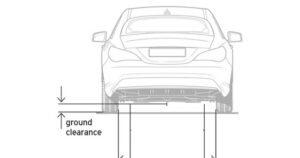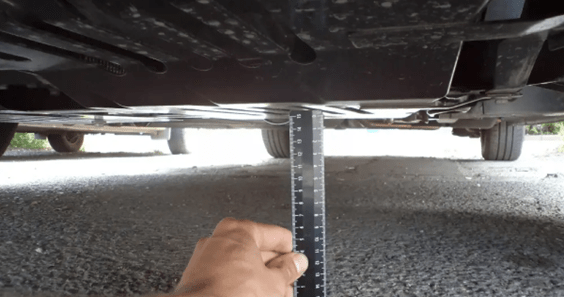…factors, implications, and choosing between Sedans and Crossover SUVs
Ride height also known as ground clearance is an important factor to consider when it comes to vehicles. It refers to the vertical distance between the ground and a specific point on the vehicle, usually the lowest point on the underside. In Ghana, many people believe that an SUV is better suited to their needs because of its higher ride height.

The ride height of a car has several implications. Firstly, it affects the car’s handling and stability. A lower ride height can improve cornering and reduce body roll, making the car feel more responsive and stable during maneuvers. Conversely, a higher ride height can enhance off-road capabilities and provide better ground clearance for traversing uneven terrain.
Secondly, ride height influences the car’s aerodynamics. Lowering the ride height reduces drag and improves fuel efficiency, particularly at higher speeds. However, extreme lowering may negatively impact the car’s ability to handle bumps and uneven surfaces comfortably.
Additionally, ride height plays a role in the car’s visual aesthetics and perception. Different ride heights can give a car a sporty or aggressive appearance, while higher ride heights are often associated with SUVs and off-road vehicles.
Ultimately, the ideal ride height depends on various factors such as the car’s intended purpose, driving conditions, and personal preferences. Automakers carefully engineer and tune a car’s suspension to strike the right balance between comfort, performance, and practicality.

Source: https://groundclearances.com/
When it comes to crossover SUVs, they are vehicles with a raised ride height based on the platform of a sedan. In the automotive industry, platform sharing has become common, as it allows manufacturers to utilise one platform for multiple vehicle models and variations, resulting in increased profitability. For instance, Volkswagen Group owns various brands like Audi, VW, Seat, Skoda, Bentley, Lamborghini, Porsche, Scania, and more. They can use the same platform, such as the Vw A06 (PQ26), for multiple cars like the Vw Polo, Skoda Fabia, Skoda Rapid, and Seat Ibiza, among others.
Taking Honda as an example, their brands include Honda and Acura. The HA platform, which underpins the popular Civic in Ghana, also serves as the foundation for other models like the CR-V, the latest US market HR-V, Acura Integra, and Acura RDX. The key difference between the Honda Civic and CR-V lies in the wagon body and the raised ride height (The new Honda Civic has a ground clearance of 6.7 inches, while the Honda CR-V has a ground clearance of 7.8 inches.). This means that while they share the same platform, the CR-V has a higher ride height, which can reduce its efficiency and add weight (the Civic weighs 2,933lb compared to 3,455lb for the CR-V), further impacting its efficiency.
Ultimately, the choice between a crossover SUV and a sedan depends on individual preferences and needs. Consider factors such as the desired ride height, intended use, and efficiency when making a decision.
Happy Motoring………










